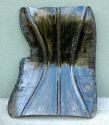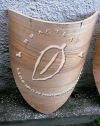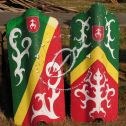 Shields
Shields
|
Trough the centuries the shield was the main defending armament for generations of warriors. This is why there where so many types of shields in use. The shape and dimensions where always strongly connected with the role of the particular shield type. This is shown on the examples below. We can prepare fully finished (even painted) shield for you, but you also can order wooden frame, a base for your self-finished shield. Usually prices in examples below are for finished but not painted shield. |










